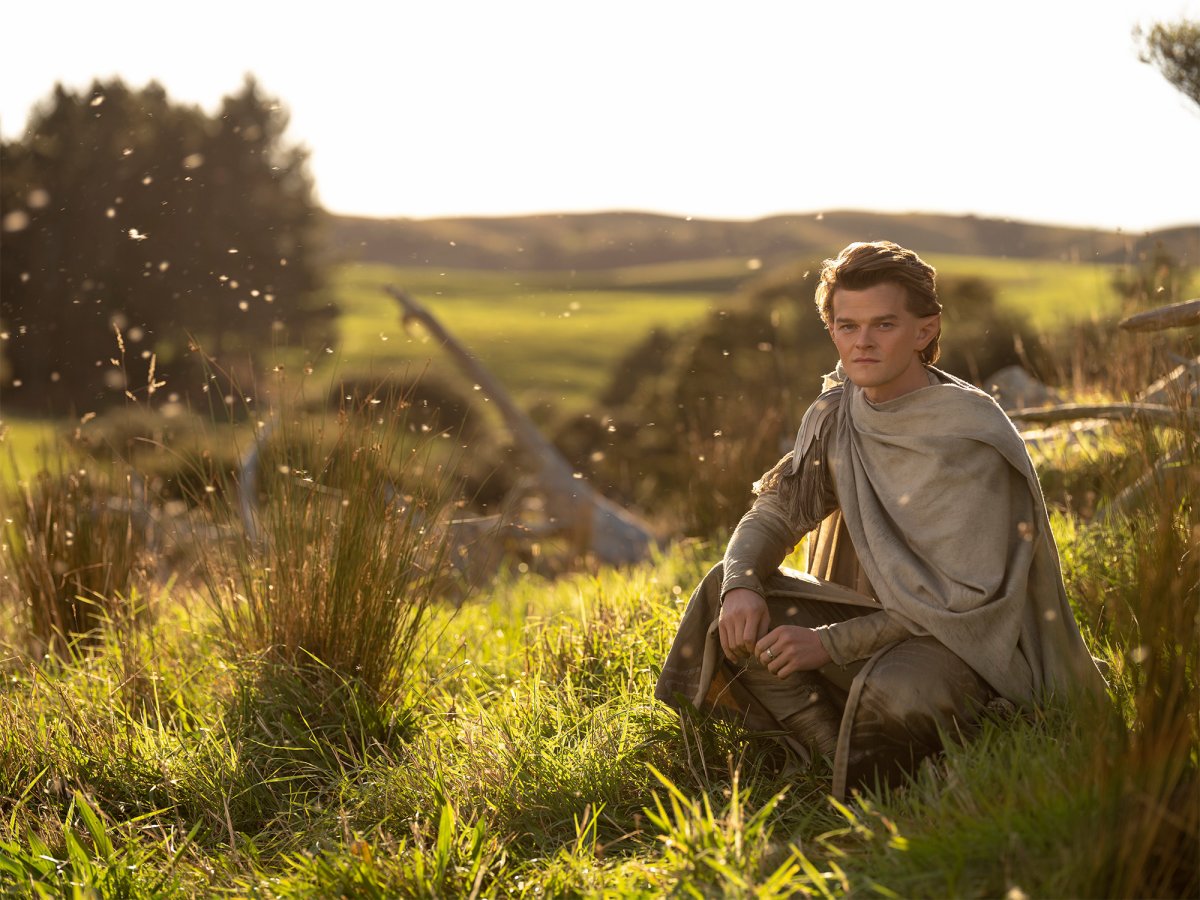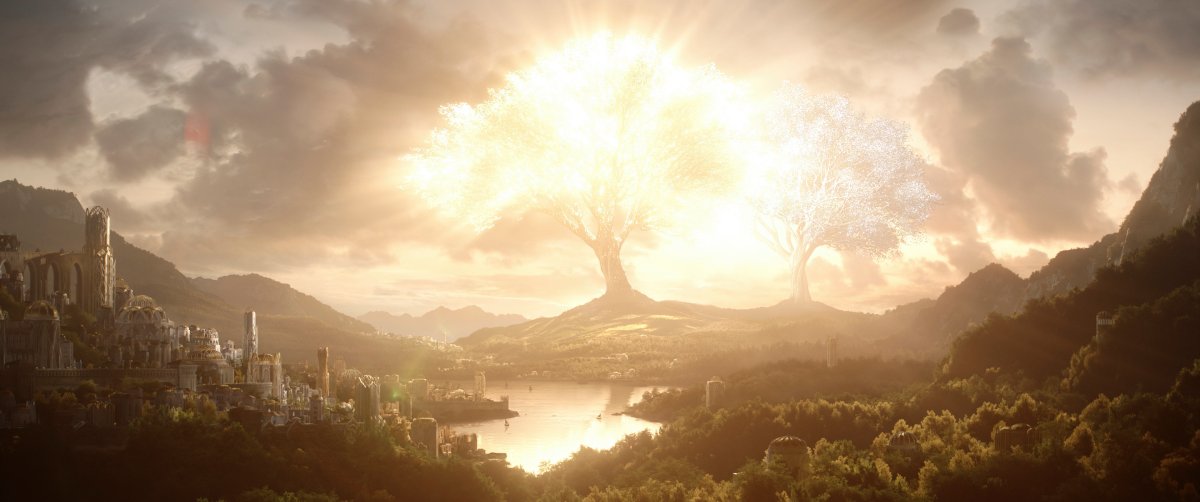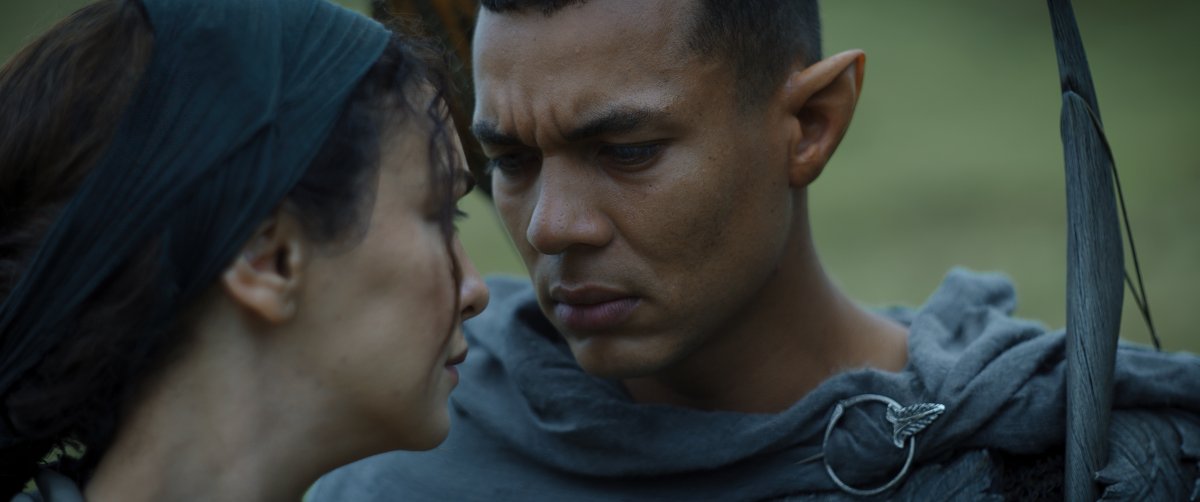Amazon Studios has been teasing a Lord of the Rings spinoff since 2017, and after a long five-year wait, the project billed as the most expensive TV show in history is finally happening.

The series is set to debut on Sept. 2 amid competition with another juggernaut fantasy spin-off, The House of the Dragon, a prequel to Game of Thrones. In a media climate rife with franchising, remakes, prequels and sequels, will Lord of the Rings: The Rings of Power be able to stand out?
Global News watched the first two episodes of the sprawling new series and it is a feast for the eyes. Fans of J.R.R. Tolkien’s books and the original movie trilogy will not be disappointed when it comes to the scope and spectacle of the show — unsurprising, considering how much Amazon Studios spent to develop it.
In order to secure the rights to make a LOTR TV show, Amazon shelled out an unprecedented US$250 million to the Tolkien Estate. (In comparison, the original three Lord of the Rings movies had a budget of $281 million.)
To produce the first season alone, Amazon is estimated to have spent around $465 million, bringing the grand tally to a whopping $715 million.
For that hefty price tag, The Lord of the Rings: TROP certainly delivers — boasting high stakes, charming new characters and a rich, expansive world that evokes the feeling of the original trilogy. This is a small-screen project with a vitality you’d expect of the silver screen.
It’s not just the sets, character design and score that harken back to the Middle-earth we’re familiar with; the themes that pervade TROP are clearly an homage to Tolkien. Messages of hope and adventure are intercut with great loss and sacrifice. The equation of ecological desolation with villainy also continues that naturalist through-line that Tolkien developed in his novels.
But even among the high-minded politicking and make-or-break struggle of good against evil, TROP still leaves space for whimsy, mystery and levity.
We break down everything you need to know about the series, from the backstory of the plot to how the story stands apart from LOTR, and how the showrunners and cast set about building a world that they hope would have done Tolkien proud.

The backstory
The Rings of Power is a prequel series that explores the Second Age of Middle-earth and is based on six appendices that Tolkien added to the end of the third LOTR novel, The Return of the King. Yes, that’s correct — $715 million was spent adapting footnotes.
But like everything else Tolkien wrote in the world of the Rings, those footnotes are rich and lengthy, and recount the major events of the First and Second Ages, including a summary of the Third Age in which LOTR is set. It also includes a history of the romance between Aragorn, a human, and Arwen, an elf who gives up immortality to be with her love.
When Amazon acquired the rights to make the show, many wondered if they were planning on making a young Aragorn adaptation. Instead, the studio went with a story set thousands of years before Frodo destroyed the One Ring in the fires of Mount Doom.
The Second Age is a relatively more peaceful time than the world we saw in LOTR. Morgoth, the predecessor and mentor of Sauron, has been defeated and the various races of Middle-earth mostly believe that evil has been eradicated from their world.
The show charts Sauron’s rise to power and the creation of the 20 titular rings of power: 19 of which go to the elves, dwarves and men, with the all-powerful One Ring being forged by Sauron himself.
TROP “will take viewers back to an era in which great powers were forged (and) kingdoms rose to glory and fell to ruin,” according to the studio. The heroism and grave mistakes made during this time will leave a legacy that is remembered as history during the LOTR.
What’s changed and what’s stayed the same
Though the appendices on which TROP are based are extensive, there are still considerable gaps that the show’s creators had to fill. The footnotes were not written as a narrative so much as a timeline, so characters and a significant amount of world-building had to be invented.
Despite the fan-fiction-like nature of the show, its new additions are firmly within the confines of what Tolkien wrote, and they use the same visual language styled by director Peter Jackson in the original movie trilogy.
In the show, viewers will meet the harfoots, a race of early hobbits that feel like a slightly wilder, Celtic version of Bilbo, Frodo, Samwise, Merry and Pippin. They are similarly short, barefoot, love to eat and are generally homebodies who stick together. Instead of living in The Shire, the harfoots are nomadic and seem to have a deeper connection with nature than their successors.
Elves in TROP evoke Peter Jackson’s elves from the original movie trilogy: beautiful and graceful, yet serious and enigmatic. They live in a towering and lush city called Lindon that will remind fans of Rivendell.
Two familiar elvish faces that fans will recognize are Galadriel and Elrond in their younger days. Galadriel, played by Morfydd Clark, is more brash and militaristic than her serene, wise self in LOTR, yet she’s just as ethereal. We meet Elrond in the early days of his political career, with far less power than that he wielded in the Third Age as Lord of Rivendell.
Global News chatted with Robert Aramayo, the actor playing Elrond, and it’s clear how much respect he holds for Tolkien and his novels.
“The first book I ever read was The Hobbit,” he said, his thick Yorkshire accent shining through. “It’s been a great opportunity to go deeper into a world that I already love.”
He told Global News that he’s honoured to step into the role originated by Hugo Weaving — though he unfortunately didn’t get to meet him — and that audiences will be excited to see how different this Elrond is.
“He hasn’t gone through some of the things that will make him the Elrond that we meet in the books,” Aramayo said. “He’s definitely got a lot to learn and a lot to do.”
Another familiar feature that perceptive fans will notice is the dwarven stronghold of Kazakh-Dum, the place where Gandalf the Grey died defeating the monster Balrog before being reincarnated as Gandalf the White. In LOTR, this place is abandoned and in ruin. In TROP, it’s in its cultural and architectural heyday.
A new location that fans of the movies won’t recall but book lovers might is the island nation of Númenor, from which Aragorn’s ancestors hailed.
Like Jackson’s films, TROP was shot on location in New Zealand, though filming will move to the U.K. for its second season. Unlike the trilogy format of Jackson’s movies and Tolkien’s books, TROP is locked into a five-season commitment. Season 2 of the show was already greenlit way back in 2019.
Some of the crew has even remained the same, with Howard Shore, the composer for Jackson’s Rings also composing for the Amazon show. Weta Workshop, a special-effects and props company, was also tapped by Amazon from the original movies. Even some of the same actors who played Orcs have returned.
Jackson himself is not involved in the series. Instead, the showrunners are a relatively unknown creative duo: Patrick McKay and J.D. Payne. Before TROP, the pair had only one public IMDb credit.
Behind the scenes
Global News spoke with McKay and executive producer Lindsay Weber to better understand how the creative team set about creating a series fit to showcase the world of LOTR.
“Really the goal with this show is to go deep into the texts and go back to Tolkien and go back to the books,” McKay said. “We felt there was so much there that hadn’t been seen onscreen before, and we were determined to realize it in a way that had the scope and the breadth and the depth of what we feel when we read those books.”
McKay spoke with a reverence for Tolkien that made it clear just how closely he had studied the source material.
“We do think there’s a special emotional connection in those books. And it means something to people and there’s a reason for that. It’s timeless, and it’s universal, and it’s about relationships, and friendship. And it’s about … the smallest can overcome great evil, just by being true to each other. And we wanted to bring that to the screen,” McKay said.
Weber spoke about using practical effects for the show whenever possible to give TROP a real and natural feel to it, though there were limitations to what they could do on-camera.
“We built a lot, we went to a lot of locations. Moving a circus, as they say, this size out to locations is no small thing. We put up cities in the middle of the woods at night, in some cases, just to house the crews so that we could get to shoot and relocations,” Weber said.
“And from there, there are certain things in a grand epic story like this that have to be realized only in visual effects. Kazakh-Dum is a really good example. No matter how much you try, nobody’s going to build a city deep inside a mountain.”
McKay said that the creative leads worked hard to balance between the more real worlds and the scenes that contained a lot of visual effects.
“So if you’re in a world that’s very constructed, and has quite a bit of visual effects and creatures, hopefully, the next world really feels the real sunlight and the real air,” McKay said. “We reckon that maybe the more fanciful, imagined worlds would feel more real when they’re set against very real tangible worlds and vice versa.”
Bringing the Second Age to the modern day
One major departure from the original movie trilogy is that TROP shows Middle-earth to be a diverse world with people, elves and dwarves of colour.
Sophia Nomvete is playing the first Black dwarf and first female dwarf ever in a Tolkien adaption. She plays Princess Disa, the wife of Prince Durin, the heir to the dwarven throne in Kazakh-Dum.
A number of the harfoots are Black, including Sadoc Burrows, a keeper of knowledge who appears to be a leader among the nomadic people. Burrows is played by Sir Lenny Henry.
Afro Latino actor Ismael Cruz Cordova hails from Puerto Rico and is the first elf of colour in the world of the Rings. We see him engaged in a forbidden love affair with a human healer named Bronwyn, played by Iranian-British actor Nazanin Boniadi. In this time, elves stand guard over human villages and monitor them for signs of insurrection, since humans allied with the evil Morgoth in the First Age.
Cordova told Global News that he was “so excited” to meet other actors of colour on set, since the franchise hasn’t always been “representative of people like ourselves.”
Boniadi and Cordova also pushed back on claims that Amazon was bowing to “woke” pressure to cast diversely.
“For the characters of colour on the show … I promise you will see them and you’ll be like, ‘There’s no one else that could have played this thing,'” Cordova said. “This wasn’t … colourblind casting, trying to tokenize people. It was like the soul of the character met the soul of the person.”
“I love what he says soul casting,” Boniadi added. “Because I, as Bronwyn, when I look at the fact that she’s a healer and I was pre-med, when I look at the fact that she is trying to liberate her people, I’ve been an activist for my homeland Iran for over a decade. She is a fantastical version of myself.”
Cordova said that he has faced some backlash from fans who don’t see a place for people of colour in the world of LOTR and that he doesn’t consider these people as true fans at all.
“I cannot understand or call them fans because it’s just another kind of hate that just has no place,” Cordova said. “And in truth, we’re not giving it a lot of power. We’re doing this thing for the people that want to see us thrive, we’re doing this for people who … are going to find themselves represented, inspired.”
It remains to be seen if audiences will feel inspired or let down by TROP, but that will soon be determined.
Enjoy the adventure.
—
The first two episodes of ‘The Lord of the Rings: Rings of Power’ premiere on Sept. 2 on Prime Video with each episode after that debuting weekly.













Comments